Removal Procedure
- Relieve the fuel system fuel pressure. Refer to Fuel Pressure Relief Fuel Pressure Relief Procedure .
- Drain the fuel tank. Refer to Fuel Tank Draining .
- Raise the vehicle. Refer to Lifting and Jacking the Vehicle in General Information.
- Loosen the fuel filler hose clamp (1) at the fuel tank (3).
- Remove the fuel tank filler hose from the fuel tank.
- Disconnect the fuel feed, the fuel return and the evaporative emission (EVAP) pipes quick-fittings at the fuel tank. Refer to Plastic Collar Quick Connect Fitting Service .
- Remove the exhaust pipe hangers in order to allow the exhaust system to drop slightly.
- Separate the 2 halves of the EVAP fresh air line at the splice.
- Remove the fuel tank shield push pins (2) and the fuel tank shield (3).
- Support the fuel tank with a suitable jack.
- Remove the fuel tank strap bolts (2).
- Remove the fuel tank from the vehicle and place the fuel tank in a suitable work area.
- Disconnect the fuel tank pressure sensor electrical connector.
- Disconnect the fuel sender electrical connector.
- Clean the fuel pipes, the fuel sender assembly to prevent possible fuel contamination during removal.
- Disconnect the quick-connect fittings at the fuel sender assembly. Refer to Plastic Collar Quick Connect Fitting Service .
- Remove the fuel sender retaining ring.
- Remove the modular fuel sender assembly.
- Clean the fuel sender assembly sealing surfaces.
- Inspect the fuel sender assembly sealing surfaces.
Caution: Fuel Vapors can collect while servicing fuel system parts in enclosed
areas such as a trunk. To reduce the risk of fire and increased exposure to
vapors:
• Use forced air ventilation such as a fan set outside
of the trunk. • Plug or cap any fuel system openings in order to reduce fuel vapor
formation. • Clean up any spilled fuel immediately. • Avoid sparks and any source of ignition. • Use signs to alert others in the work area that fuel system work
is in process.
Notice: Clean all of the following areas before performing any disconnections
in order to avoid possible contamination in the system:
• The fuel pipe connections • The hose connections • The areas surrounding the connections
Notice: Cap the fittings and plug the holes when servicing the fuel system in order to prevent dirt and other contaminants from entering the open pipes and passages.
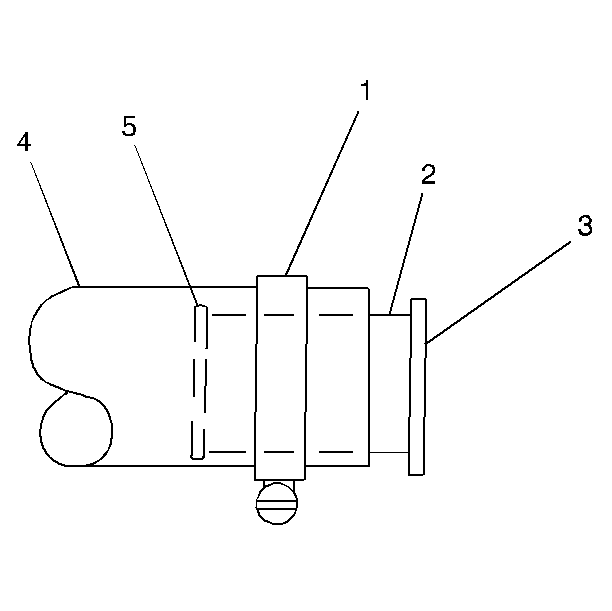

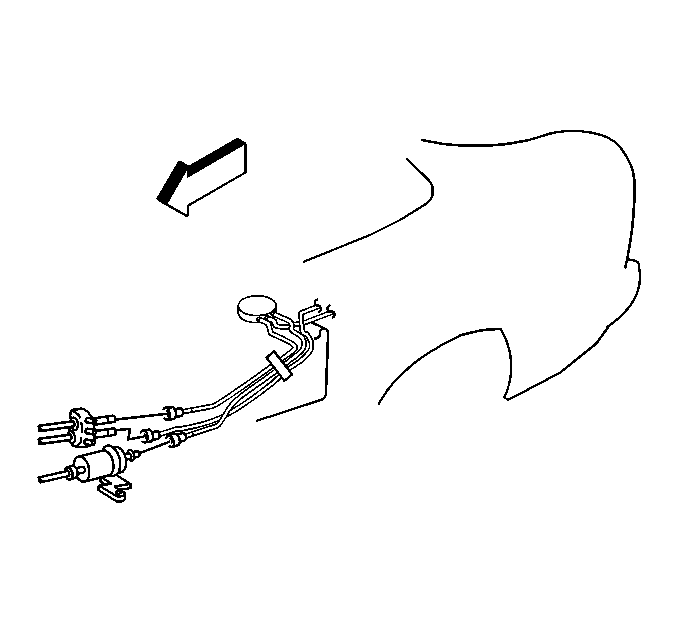
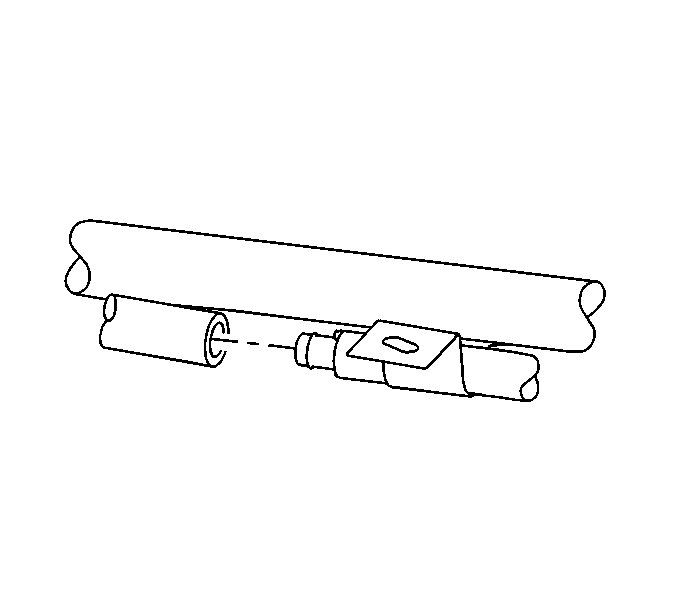
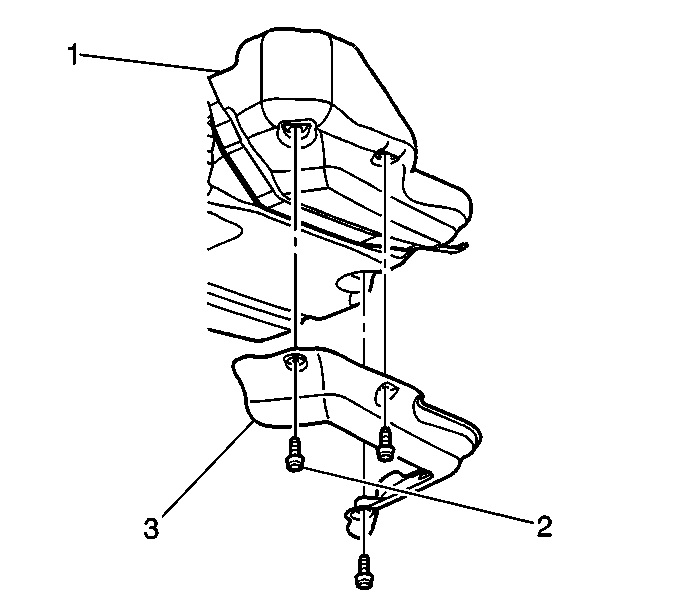

Notice: Refer to Damage to Fuel Tank Straps Notice in the Preface section.
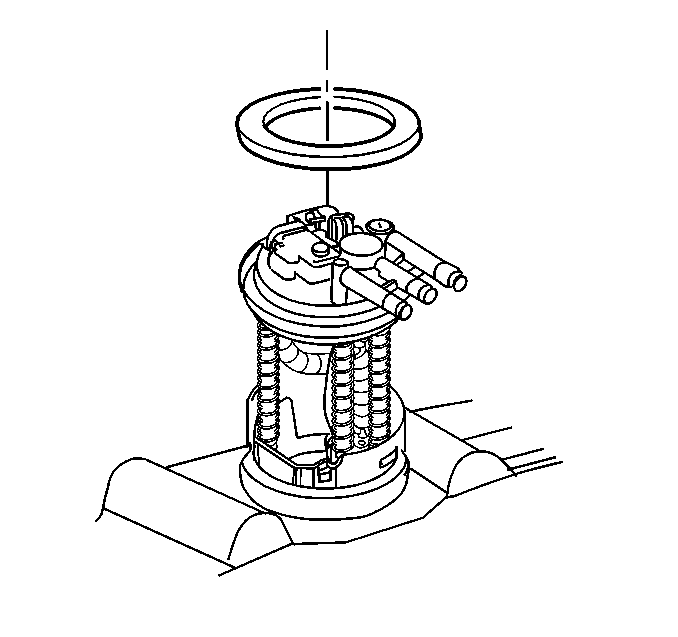
Important: The modular fuel sender assembly will spring-up when the snap ring is removed.
Installation Procedure
- Position the new fuel sender assembly seal into the fuel tank.
- Place the fuel sender assembly into the fuel tank.
- While holding the fuel sender in place install the fuel sender assembly retaining snap ring.
- Connect the quick-connect fittings at the fuel sender assembly. Refer to Plastic Collar Quick Connect Fitting Service .
- Connect the fuel sender electrical connector.
- Connect the fuel tank pressure sensor electrical connector.
- Install the fuel tank to a suitable jack.
- Raise the fuel tank to the original position.
- Install the fuel tank strap bolts.
- Position the tank shield (3), and install the push pins (2).
- Connect the fuel feed, the fuel return and the EVAP pipes quick-connect fittings at the fuel tank. Refer to Plastic Collar Quick Connect Fitting Service .
- Install the 2 halves of the EVAP fresh air hose at the splice.
- Install the fuel tank filler hose to the fuel tank.
- Fully seat the filler hose (4) on the fuel tank port (2).
- Ensure the clamp (1) is properly located on the tank port between the bead (5) and the tank (5).
- Raise the exhaust to the original and install the exhaust pipe hangers.
- Lower the vehicle.
- Add fuel and install the fuel filler pipe cap.
- Connect the negative battery cable. Refer to Battery Negative Cable Disconnection and Connection in Engine Electrical.
- Inspect for fuel leaks using the following procedure:
Notice: Refer to Fuel System Ground Notice in the Preface section.
Important: Care should be taken not to fold over or twist the fuel pump strainer when installing the fuel sender assembly, as this will restrict fuel flow. Also, assure that the fuel pump strainer does not block full travel of float arm.
Important: Be sure that the fuel sender assembly retaining snap ring is fully seated within the tab slots on the fuel tank.
Important: Always replace the fuel sender seal when reinstalling the fuel sender assembly.

Notice: Refer to Nylon Pipes Notice in the Preface section.

Notice: Refer to Fastener Notice in the Preface section.
Tighten
Tighten the bolts to 48 N·m (35 lb ft).





Tighten
Tighten the fuel tank filler pipe hose clamp to 2.5 N·m (22 lb in).
| 20.1. | Turn ON the ignition, for 2 seconds. |
| 20.2. | Turn OFF the ignition, for 10 seconds. |
| 20.3. | Turn ON the ignition. |
| 20.4. | Inspect for fuel leaks. |
